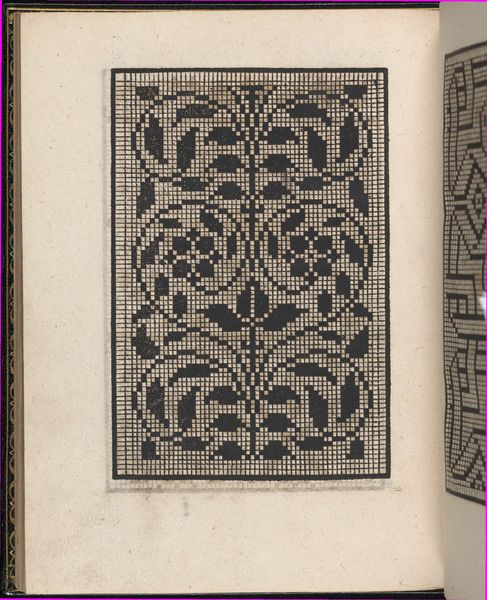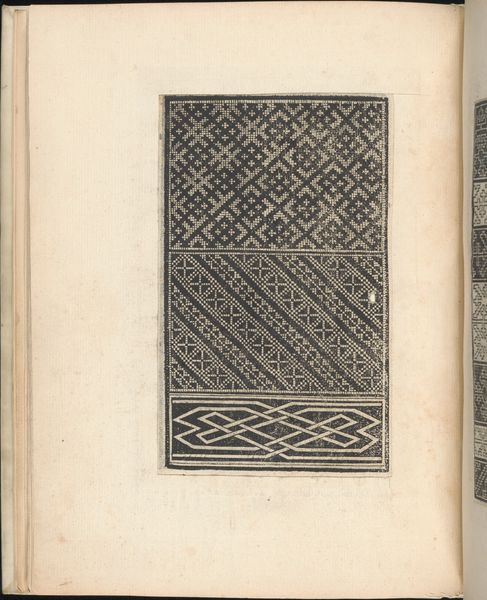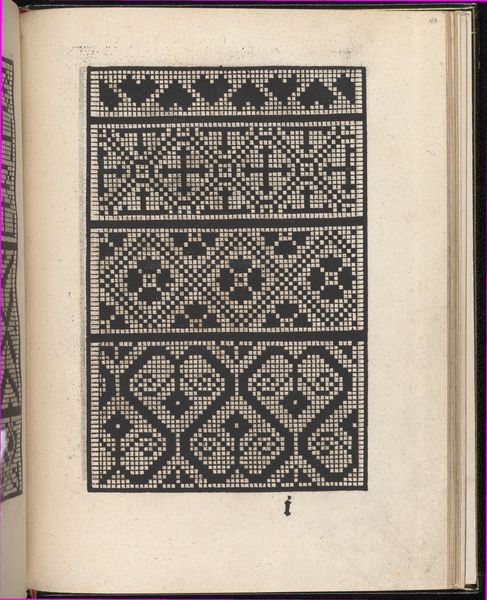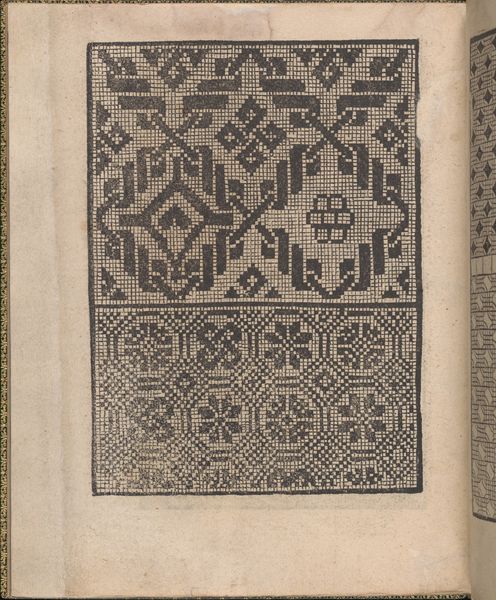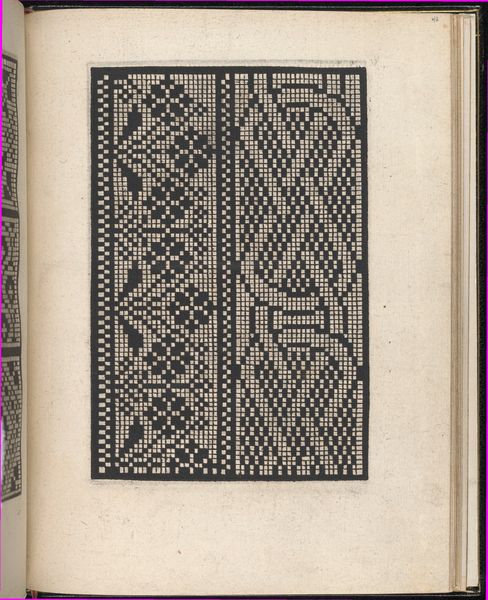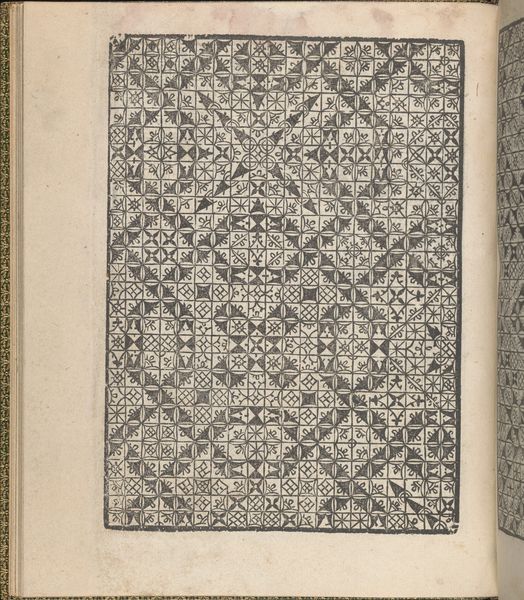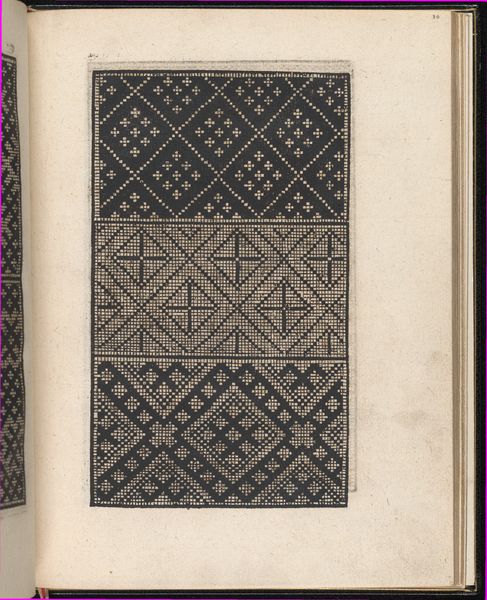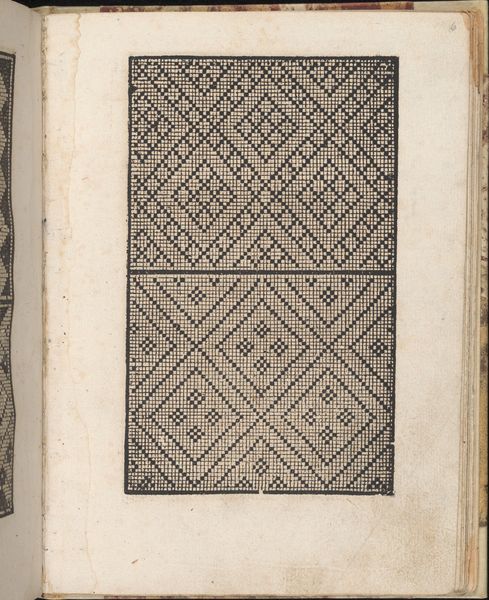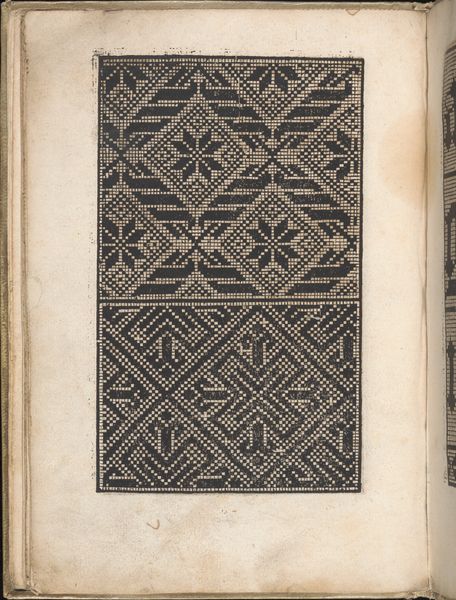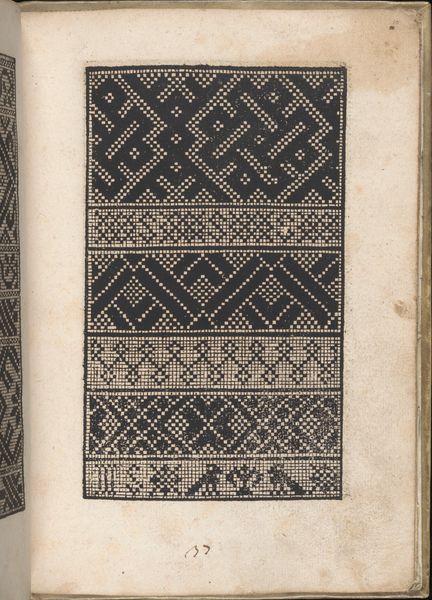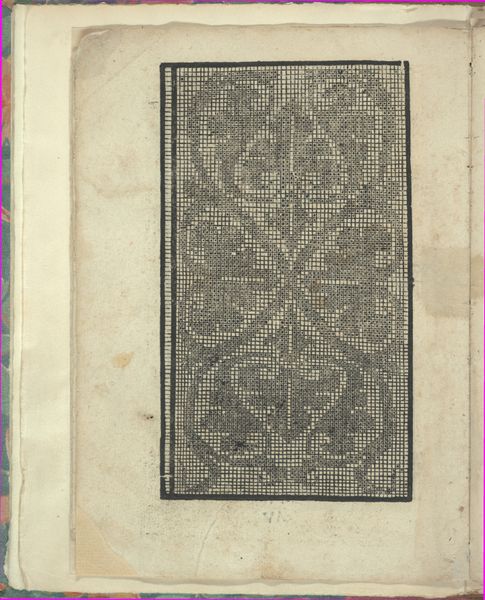
Page from Ein new kunstlich Modelbuch...(Page 42v) 1544
0:00
0:00
drawing, graphic-art, print, woodcut
#
drawing
#
graphic-art
#
medieval
# print
#
pattern
#
geometric
#
woodcut
Dimensions: Overall: 7 11/16 x 5 7/8 in. (19.5 x 15 cm)
Copyright: Public Domain
Curator: Looking at this page from Peter Quentel’s “Ein new kunstlich Modelbuch…", printed in 1544, I’m immediately drawn into a hypnotic rhythm. Editor: Yes, that black and white grid certainly commands attention, doesn't it? There's a boldness in the stark contrast that gives me pause. Curator: Indeed. It's more than just decoration, though. The geometric precision is evocative of a very particular era, when pattern books served as vital tools across artisanal trades. Editor: And vital for solidifying power too, don’t you think? These patterns become almost a language. Consider how access to, and control over, such knowledge, influenced early trade and production. Imagine the ways this knowledge circulated – and the inequities that inevitably developed! Curator: You are absolutely right; the woodcut acts as a symbolic document revealing knowledge dissemination in the early modern period. The pattern contains cultural memory, showing echoes of earlier designs while prefiguring new artistic forms. These aren’t just motifs; they carry ideas about symmetry, order, and even beauty. Editor: And in a world grappling with nascent capitalism and evolving social structures, wouldn't control of aesthetic production be considered paramount? Did creating this regularity mean enforcing a new set of social regularities too? Curator: Fascinatingly complex. Thinking of domestic contexts too, perhaps embroidery samplers created from books like this taught virtue and patience to young women learning the craft. Editor: Precisely! Consider, even something so ostensibly decorative encodes powerful societal messages, shaping expectations and defining gendered spaces. How did this contribute to the subjugation – and cultural power – of women in this period? It certainly provides insight on material culture and production within various political environments. Curator: I agree; that is important to explore! This small print then reveals multiple histories, and a rich symbolic order that informs art and society. Editor: Right. What appeared to be just a nice repeating design initially has brought us to considering broader socio-economic and gender dynamics. A vital reminder about looking beneath the surface of historical material!
Comments
No comments
Be the first to comment and join the conversation on the ultimate creative platform.

